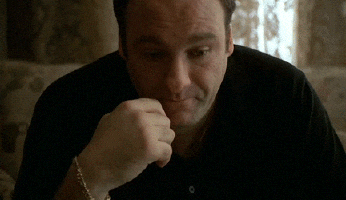How To Become An Elite Athlete
Athletes love to have these big, crazy visions. They love to sit there and say they want to become an Olympian, they want to become a world champion, but they then struggle to piece those goals together into how to work back from the end goal and how to hold themselves accountable to get to that endpoint.

A lot of athletes and coaches struggle with this perspective. What does it take to actually develop Olympians? What does it actually take to develop world-class athletes? Where to even start? This is a missing piece in a lot of sports performance and strength and conditioning regiments. Coaches just want athletes to come in and do their work and leave so they can wash their hands of the athletes. That doesn’t cut it.
There is a lot of factors that go into developing and becoming a world-class athlete. It isn’t just strength training. It isn’t just technical training. There is a lot of work on mobility, on visualization, the mental game, and a lot of other factors that go into developing an Olympian.
Let’s start by looking at it from the athlete’s perspective.
1. Establish The End Goal
This is a mental hack. We can’t say, “We want to be really good.” We need to say, “We want to execute and do this, achieve this moment, hit this standard, or whatever it might be.” It needs to be specific. From there we can see where we are at currently on the journey to develop a road map to get to the destination on the journey. We can’t get from point A to point B without drawing up some type of plan, without having a map of how to get from point A to point B. Both points need to be established.
Maybe a sprinter right now is sitting there today saying, “I want to become a world-class sprinter and I run a 10.5 in the 100 meters.” To be world-class the athlete needs to run a 10.1 or below. From there we can take that established goal as an athlete and figure out all the little things to be taken care of to get there.
Regardless, the first step is establishing the end result to have a guide for true-north.
2. Build A Schedule
The end goal is established and now we need to build the schedule and plan around that goal. Athletes say they want to accomplish this and do that, but instead of establishing the goal and then executing the schedule around it, they just say it. It is fun to say it, it is neat to have that engagement. It is hard to execute day in and day out, week in and week out, month after month, into year after year to get to that point.
We take the end result and start executing the schedule. We need to wake up earlier in the morning to do mobility work. We need to do some meditation work to master quiet sitting. We have to have a period in the day to do technical work. We have to have a point in the day where strength training is executed. There is also a duration in the day where we have to work, go to school, or whatever it is that needs to be done to live.
All of this factors into the goals to make the schedule. It needs to be executed for days that will add up to years. It isn’t a once-and-done thing. It can take a decade to achieve. We need to constantly hone in on weaknesses in the schedule to constantly improve. It is not an overnight thing. To get to that point, we have to start somewhere. Starting somewhere will decrease stress and improve self-management that will make us better athletes long-term and more likely to get to the top level.
3. Support System
Establishing a check support system means surrounding ourselves with people who hold us accountable and provide love and support. Athletes need a support system. Athletes need to be able to talk to moms, dads, brothers, sisters, coaches, friends, and whoever it is to put them in line to get them to where they need to be, reminding them of end-goals. Athletes need a support system financially, emotionally, and socially. The support system makes us better athletes, better people, and helps us achieve greater standards as athletes.
Having a support system in place is key. We can’t accomplish this all by our lonesome. We need support from coaches, family, and friends.
Now that we covered an athlete’s perspective, let’s look at it from a coach’s perspective and what it takes.
4. Positive Support System
Coaches can’t criticize in a manner that is negative, brow-beating or involves just yelling words that beat them down. Yes, it is okay for coaches to yell--athletes are tough. But when athletes are dealing with serious stress or struggling to figure something out, coaches need to provide clear and positive support.

Coaches need to help athletes how to manage their schedules more effectively to achieve their goals. It needs to be done in a manner that provides criticism, but in a positive way. Remind them of their end goals and remind them that their actions are not currently in line with the end goals. Then provide a solution to get them back on track to achieve the end goal.
Don’t just tell an athlete to try harder. That is not an actionable support. It is not positive support. It is just a command. The athlete then perceives it as negative as though they are not trying. Not good. Coaches need to provide positive, clear support.
5. Communication
Coaches have to have a clear line of communication that is critically based for improvement. Don’t beat the athlete down, but clearly communicate what is wanted, what the expectations are, and what the coach perceives the athlete to do with clear, positive lines of communication.
Laying out expectations clearly and how things will get done being laid out clearly help a lot. For instance, coaches, especially prior to peaking athletes, need to communicate holes in the athletes’ preparations. Point out tardiness, things being left undone, and the lacking of being mentally focused, or other things of this nature. Criticize positively and provide clear points of what the athlete can do to take concrete actions of what to do to live up to expectations to meet the goals. Embody the goals through the lines of communication.
Coaches need to provide some sense of criticism, but the criticism has to have an action and expectation. If there is an action of what the coach wants the athlete to do and an expectation of the level the coach wants it performed at, the athlete can fill it in with their performance.
6. Plan With Stress
Develop the plan with all manners of stress factored into the plan. Coaches like to plan while pretending the world exists in a vacuum. They only factor in the stress that takes place in the weight room. Not the case. Athletes have work, bills, lack of support from parents, friends, or loved ones. The list goes on with extra stressors that can add up.

As a coach, we can design the plan for the athlete’s sport, their technique, days needed to mediate, hours to sleep, nutrition, what to carry when traveling on an airplane, what to do training today, training tomorrow, and factor in all the different levels of stress and teach the athletes skills that they can utilize to handle the stress. Pass the wisdom on because the sooner the athlete can manage their own stress levels more effectively the better they become as athletes.
Recap
Making stress management easier, in turn, improves lines of communication. Less stress makes communicating clearer and better. Better communication helps the big-time goals become easier to be realized. But let’s not joke ourselves. Becoming a world-class athlete is not easy. It takes years of work. It takes daily actions. It takes dedication and commitment. It also takes a goal, a plan, and a support system. It is really that simple? Nothing ever is. Still, it is what needs to happen before any standing on the podium at the Olympics will ever occur. No time like today to get started.
DANE MILLER
Dane Miller is the owner and founder of Garage Strength Sports Performance. He works with a select handful of clients on building comprehensive programs for fitness and nutrition. Several times a year he leads a workshop for coaches, trainers, and fitness enthusiasts.


